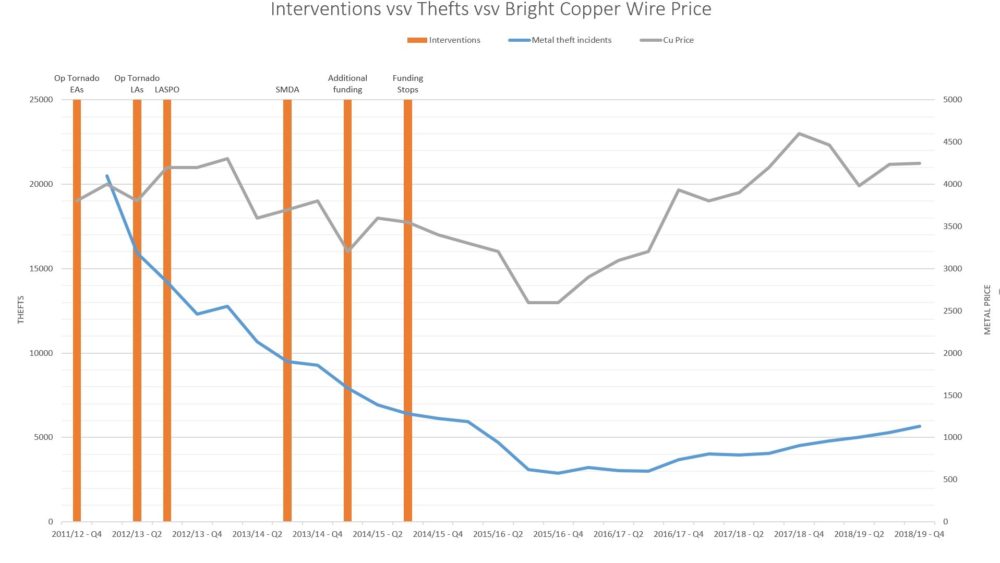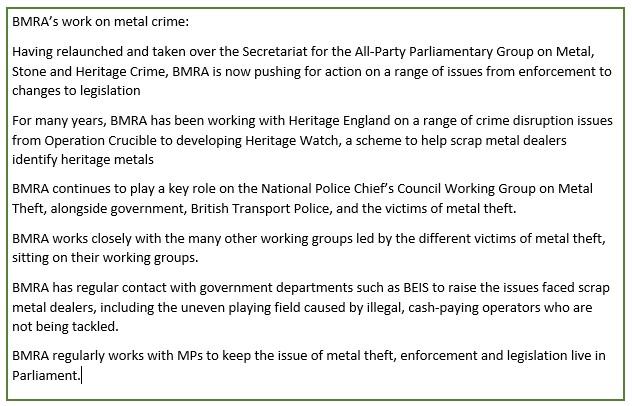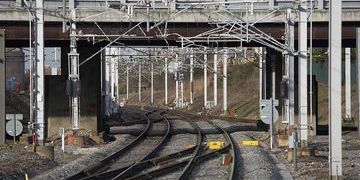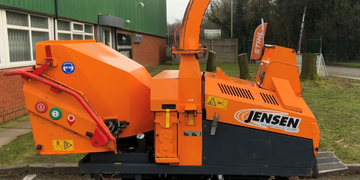With metal thefts rocketing, enforcement is key
But scrap metal legislation also needs to be changed to tighten the loopholes.
At the end of April, the Office for National Statistics (ONS) released its latest Crime Statistics Bulletin. This referenced its own Property Crime data, which showed that metal crime incidents for the year end March 2018 had increased by 25% to 16,552 events. The Bulletin even pointed to increases in metal prices as one reason for the spike in thefts. However, of most concern is the fact that the data being quoted by the ONS is woefully out of date.
A simple trawl of the internet or scan of social media will show that reports of metal theft incidents is almost a daily occurrence. From videos of thieves stealing catalytic converters in broad daylight to images of church roofs stripped bare of lead. And now, we are seeing railway signalling and power cables being stolen too where the threat to life is high indeed. The thieves have even turned their sights on metal recycling yards.
While there is a very clear correlation with the price of copper and lead in particular, something else must be driving this increase. Something that is allowing the thieves to act with impunity. That something is simply that they have little fear of getting caught. They know that the police services do not have the funding or manpower to investigate the crime, which normally comes with a ‘no threat to person’ tag.
The biggest question in all of this, is where is this stolen metal going? While it may be logical to assume that the stolen metal is being put in a container and exported, the sheer cost involved makes this a less likely disposal route. If it is not being shipped away, then it must be being taken to onshore yards. However, legitimate yards will be on the lookout for stolen lead and cable and will often ask for accompanying provenance or authorisation documentation. Legitimate yards will undertake the required enhanced ID checks and will not pay cash. This leaves the metal thieves few options.
Short of setting up their own yard to ‘clean’ the metal and get it into the supply chain, it is likely that the thieves are seeking out illegal yards or cash-paying operators who don’t ask questions. And they don’t have to look too hard to find them. Adverts offering ‘cash for scrap’ are all over social networking sites and online marketplace portals. These adverts are placed by illegal operators who know that cash for scrap payments are way down the list when it comes to crime investigation.
However, allowing this proliferation of cash-paying operators to continue is creating an uneven playing field and seriously harming legitimate businesses. When the Scrap Metal Dealers Act 2013 (SMDA) was introduced, the BMRA implored the Home Office to ensure the Act was enforced. We made the same plea when the Air Weapons and Licensing (Scotland) Act 2016 (AWLA) was implemented. We repeated this entreaty when the SMDA was reviewed in 2017. At the same time, we asked for a number of loopholes to be closed.
At the time, the Home Office did not accept any amendments proposed the 50+ organisations that responded to the Review. Instead, it continues to rely on out of date figures to support its claim that metal theft is no longer a problem and that the SMDA is working.
There is no denying the SMDA has been effective in tackling metal theft in England but not in isolation, as can be seen from the diagram below. Metal theft incidents began to fall during a police intervention called Operation Tornado in 2012, and continued falling when the Legal Aid, Sentencing and Punishment of Offenders Act was implemented. At the same time, world metal prices plummeted. Key to falling figures, however, was a dedicated metal theft taskforce that focused on enforcing the SMDA but funding for the taskforce was pulled in 2014.

We are now seeing metal theft incidents begin to climb. As we don’t have the figures through to year end March 2019, I have conservatively estimated that we have seen another 25 percent increase. However, I am sadly confident that the jump will be closer to, if not over, 35 percent.
Certainly, railway signalling cable is once again being targeted leading to lengthy delays across the country. In fact, in its April report on cable theft, Network rail shows that in 2018/19, 96 incidents lead to 63,672 minutes of delays, up from 38,596 in 2017/18.
It is concern over these rising figures that have led the BMRA to petition for the reinstatement of a metal theft task force. At the same time, given that the SMDA will not be reviewed again and that AWLA had no review built in, we have been actively working with the Governments in England and Scotland to identify ways that the Acts can be strengthened through amending secondary legislation.
The best way to tackle metal theft is to disrupt the disposal routes. While we wait for any changes in legislation, we need a dedicated team who, working with the Environment Agency and other bodies, can actively identify and tackle cash-paying, illegal operators thereby enabling legitimate businesses to continue to do the great job they are doing recycling metal and lessening the need to use primary materials.




